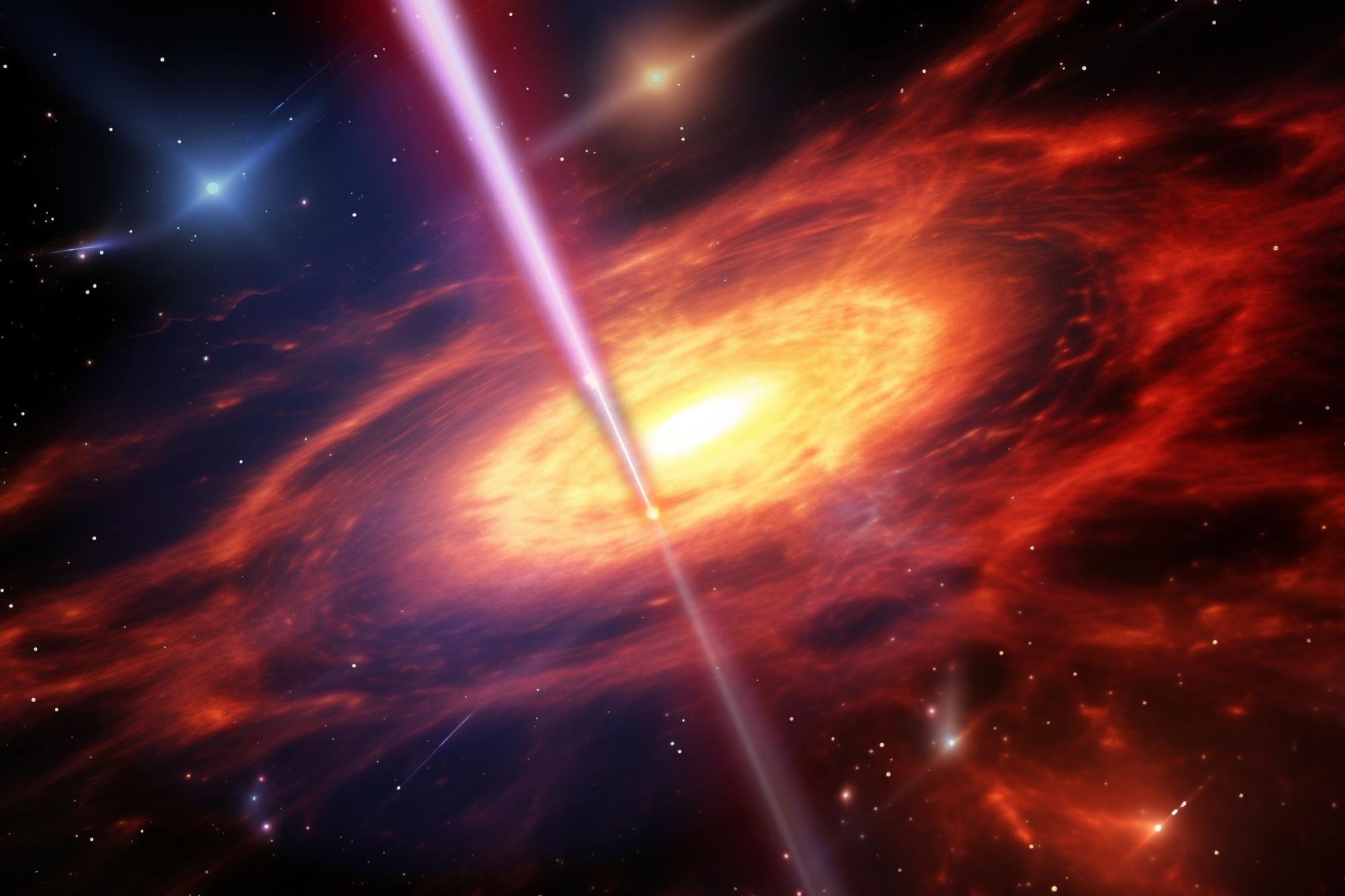
اكتشف فريق دولي من علماء الفلك انفجارًا طويلًا لأشعة غاما في مجرة قديمة قد يكون ناتجًا عن اندماج نجمين نيوترونيين منفصلين ، مما يتحدى الفهم التقليدي لأسباب مثل هذه الانفجارات. استخدم الفريق عدة تلسكوبات لتحليل اندلاع 2019 ، وبينما تم النظر في الأسباب المحتملة الأخرى ، يأملون في أن توضح الملاحظات المستقبلية أصل الظاهرة.
لأول مرة ، لاحظ فريق دولي من علماء الفلك انفجارًا طويلًا لأشعة غاما بالقرب من مركز مجرة قديمة. تحدث هذه الأنواع من انفجارات أشعة جاما عادةً عندما تنهار النجوم الضخمة أو عندما تدور النجوم النيوترونية حول بعضها البعض لفترة طويلة ، وكانت المجرات القديمة تفتقر إلى مثل هذه النجوم في نواتها. نشر فريق بقيادة أندرو ليفين (جامعة رادبوت) النتائج التي توصلوا إليها علم الفلك الطبيعي.
الإجماع العام هو أنه فقط عندما ينهار نجم ضخم جدًا ويتحول إلى مستعر أعظم في نهاية عمره ، يمكن أن تحدث انفجارات طويلة من أشعة جاما لا تقل عن بضع ثوانٍ. في عام 2022 ، تم اكتشاف محفز ثانٍ محتمل لانفجارات طويلة من أشعة غاما ، عندما اصطدم نجمان هائلان ، يدوران حول بعضهما البعض طوال فترة حياتهما ، في كيلونوفا ، ليصبحا نجمين نيوترونيين. الآن في عام 2023 ، يبدو أن انفجارات أشعة جاما الطويلة قد تحدث بطريقة ثالثة.
يقول الباحث الرئيسي أندرو ليفين Andrew Levin (جامعة رادبود): “تشير بياناتنا إلى أن هذا هو اندماج نجمين نيوترونيين منفصلين ، وبالتالي ليس نجومًا نيوترونيين يبقون معًا مدى الحياة.” ونعتقد أن النجوم النيوترونية قد دفعت معًا بواسطة سحب الجاذبية لعدة نجوم حول مركز المجرة. “
في 19 أكتوبر 2019 ، درس فريق من الباحثين آثار انفجار أشعة غاما بواسطة مرصد نيل جيريلز سويفت. تلسكوب الجوزاء الجنوبي في تشيلي ، والتلسكوب البصري الشمالي في جزيرة لا بالما الكناري و[{” attribute=””>Hubble Space Telescope.
Their observations show that the burst was caused near the center of an ancient galaxy. This immediately provides two arguments pointing to the merging of two sources.
The first argument is that there are almost no heavy stars in ancient galaxies that could collapse into supernovae, because heavy stars typically occur in young galaxies. In addition, supernovae emit bright optical light, which was not observed in this case.
A second argument is that the center of galaxies are busy places. There are hundreds of thousands of normal stars, white dwarfs, neutron stars, black holes, and dust clouds all orbiting a supermassive black hole. Altogether, this represents over 10 million stars and objects crammed into a space of a few light-years across. “That is an area comparable to the distance between our sun and the next star,” Levan explains. “So the probability of a collision in the center of a galaxy is much higher than, say, at the outskirts, where we are.”
The researchers are still leaving room for alternative explanations. The prolonged gamma-ray burst could also result from the collision of compact objects other than neutron stars, for example, black holes or white dwarfs. In the future, the researchers hope to be able to observe long gamma-ray bursts at the same time as gravitational waves. This would help them to make more definitive statements about the origin of the radiation.
For more on this discovery:
Reference: “A long-duration gamma-ray burst of dynamical origin from the nucleus of an ancient galaxy” by Andrew J. Levan, Daniele B. Malesani, Benjamin P. Gompertz, Anya E. Nugent, Matt Nicholl, Samantha R. Oates, Daniel A. Perley, Jillian Rastinejad, Brian D. Metzger, Steve Schulze, Elizabeth R. Stanway, Anne Inkenhaag, Tayyaba Zafar, J. Feliciano Agüí Fernández, Ashley A. Chrimes, Kornpob Bhirombhakdi, Antonio de Ugarte Postigo, Wen-fai Fong, Andrew S. Fruchter, Giacomo Fragione, Johan P. U. Fynbo, Nicola Gaspari, Kasper E. Heintz, Jens Hjorth, Pall Jakobsson, Peter G. Jonker, Gavin P. Lamb, Ilya Mandel, Soheb Mandhai, Maria E. Ravasio, Jesper Sollerman and Nial R. Tanvir, 22 June 2023, Nature Astronomy.
DOI: 10.1038/s41550-023-01998-8

“متعصب للموسيقى. مستكشف متواضع جدا. محلل. متعصب للسفر. مدرس تلفزيوني متطرف. لاعب.”

